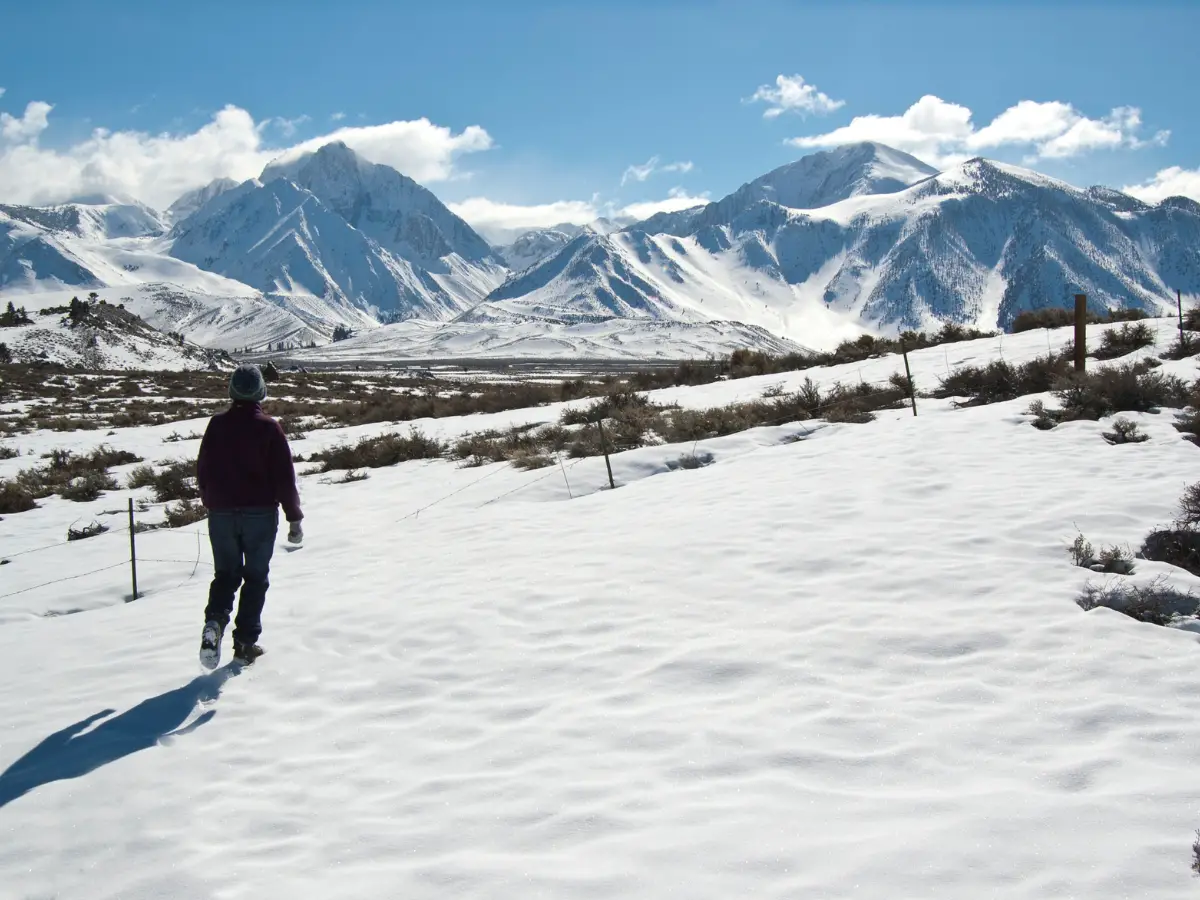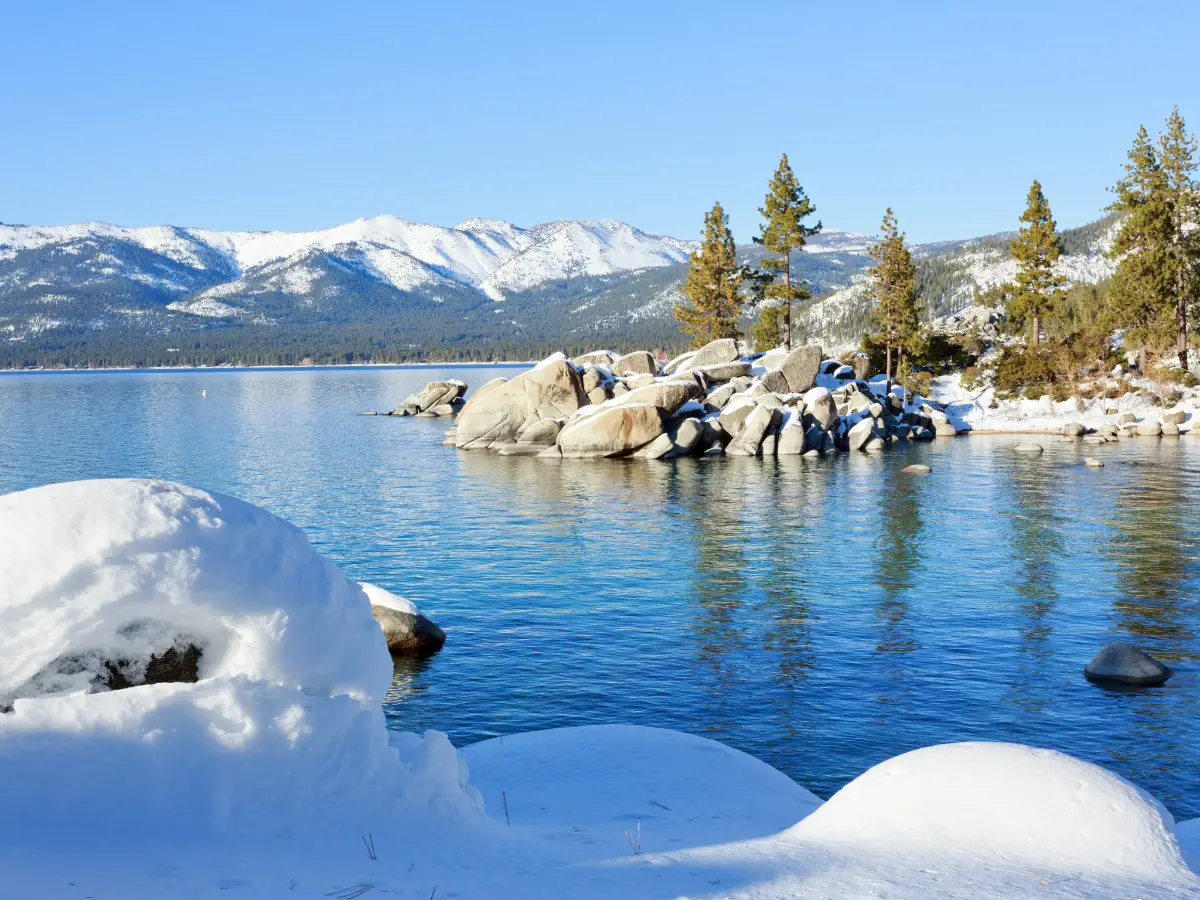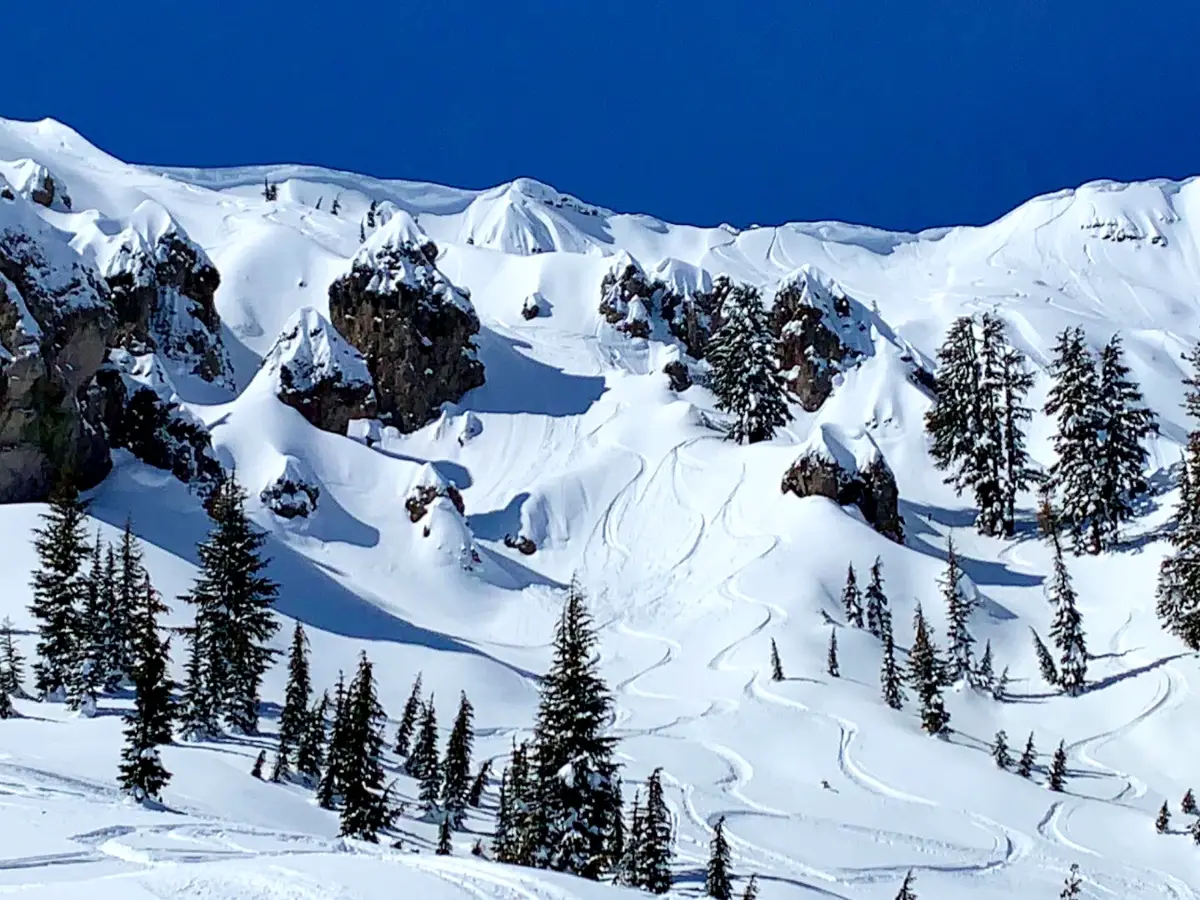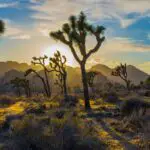California is known for its sunny beaches, palm trees, and warm weather year-round. However, many people wonder if it ever snows in California. The answer is yes, California does get snow, but it depends on the location and time of year.
The Sierra Nevada mountain range is one of the most well-known areas in California for snow. During the winter months, the Sierra Nevada receives significant amounts of snowfall, making it a popular destination for skiing and snowboarding. In fact, some of the best ski resorts in the country can be found in this region.
Other areas in California that receive snow include Big Bear Lake and Mount Pinos. However, it’s important to note that these areas are the exception rather than the rule for snow in California.

Climate and Weather Patterns in California
California is known for its Mediterranean climate, which is characterized by hot, dry summers and cool, wet winters. The state’s climate is heavily influenced by its proximity to the Pacific Ocean, which moderates temperatures and brings moisture to the region.
During the winter months, California experiences a rainy season, which typically lasts from November to April. Winter storms, which often originate in the Pacific Northwest, bring much-needed precipitation to the state, replenishing reservoirs and snowpacks that supply water throughout the year.
While California is not typically associated with snow, it does receive snowfall in certain regions, particularly in the Sierra Nevada mountain range. The amount of snowfall varies from year to year, but the snowpack plays a critical role in the state’s water supply and flood risk.
In terms of temperature, California’s coastal regions tend to be cooler than the inland valleys, particularly during the summer months. The temperature gradient between the coast and the inland valleys can be as much as 20°F (11°C) during the summer, with the coast being cooler.
Overall, California’s climate and weather patterns are complex and varied, with a range of microclimates and weather phenomena throughout the state. While the state is known for its sunny, mild weather, it is important to be prepared for the occasional winter storm or other extreme weather event.

Elevation and Its Impact on Snowfall
California’s diverse topography plays a significant role in determining the state’s snowfall patterns. Elevation is one of the most critical factors that affect snowfall amounts. The higher the elevation, the colder the temperatures, and the more likely it is to snow.
The Sierra Nevada mountain range is one of the most prominent mountain ranges in California and is known for its heavy snowfall. The range has several peaks that are over 14,000 feet high, and snowfall can occur at elevations as low as 6,000 feet. The snowfall in the Sierra Nevada mountains is essential for California’s water supply as it provides a significant portion of the state’s water resources.
The Cascades mountain range, which runs through Northern California, also experiences heavy snowfall due to its high elevations. Mount Shasta, located in the Cascades, is one of the state’s tallest peaks, and it receives an average of 300 inches of snowfall annually.
In contrast, the foothills and low elevations of California receive much less snowfall. These areas typically experience mild winter temperatures, and snowfall is rare. However, some areas in Southern California’s Transverse Ranges can experience snowfall at elevations as low as 1,000 feet.
Overall, elevation plays a critical role in determining the amount of snowfall a region receives in California. Higher elevations, such as those found in the Sierra Nevada and Cascades, typically receive more snowfall, while low elevations and foothills experience milder winter temperatures and less snowfall.

Snowfall in Different Regions of California
California is mostly known for its sunny weather and warm climate, but it does receive snowfall in certain regions during the winter season. Let’s take a look at the different regions of California that receive snowfall.
Snow in Northern California
Northern California experiences snowfall in areas such as the Shasta Cascade region, Mount Shasta, and Lassen Volcanic National Park. These areas receive an average of 10-20 feet of snow annually, making them popular destinations for winter sports enthusiasts.
Snow in Southern California
Southern California is mostly known for its warm weather, but it does receive snowfall in certain areas such as the San Gabriel Mountains and the San Bernardino Mountains. These areas receive an average of 1-2 feet of snow annually, making them popular destinations for skiing and snowboarding.
Snow in Sierra Nevada
The Sierra Nevada mountain range, located in eastern California, receives the highest amount of snowfall in the state. The snowpack in the Sierra Nevada provides water to much of California during the dry summer months. The peak of Mount Whitney, which is the highest summit in the Sierra Nevada, receives the greatest amount of snowfall in California.
Snow in Coastal Regions
Coastal regions of California rarely receive snowfall due to their moderate temperatures. However, in rare cases, coastal areas such as San Francisco and Los Angeles have experienced light snowfall.
In conclusion, while California is mostly known for its warm weather and sunny climate, it does receive snowfall in certain regions during the winter season. Visitors and residents alike can enjoy winter sports and activities in areas such as the Sierra Nevada, Mount Shasta, and the San Gabriel Mountains.

Major Snowfall Events and Records
California is not typically known for its snowfall, but the state has seen some major snow events throughout its history. Here are some notable snowfall events and records in California:
- Snowpack in the California Sierra: After an incredible series of winter storms, California officials reported that the state’s snowpack is the largest in decades. Snowpack in the California Sierra is 177% of normal for the season, which is great news for the state’s water supply.
- Heaviest snowfall ever recorded in Sacramento: The heaviest snowfall ever recorded in Sacramento happened between 4th and 5th January 1888, and the snow accumulated up to a depth of 3.5 inches (88.9 millimeters).
- Record-breaking snowfall: In December 2019, a winter storm brought record-breaking snowfall to parts of California. According to the National Weather Service, the storm dropped up to 6 feet of snow in some areas, making it one of the biggest snowstorms in California’s history.
- Blizzard warning: In February 2019, a blizzard warning was issued for the Sierra Nevada mountains. The storm brought heavy snowfall and strong winds, causing dangerous driving conditions and road closures.
- Flooding: In February 2017, a winter storm brought heavy rainfall and snow to California, causing flooding and landslides. The storm caused billions of dollars in damage and was one of the most destructive winter storms in California’s history.
- Biggest snowfalls recorded in California history: Stacker compiled a list of the biggest 1-day snowfalls in California using data from the National Centers for Environmental Information to better understand historical snowfall events on a local level. The biggest snowfall on record was in Shasta County on December 24, 1979, where 48 inches of snow fell in one day.
Overall, while California may not be known for its snowfall, the state has seen some significant snow events throughout its history. From record-breaking snowstorms to blizzard warnings and flooding, California has experienced it all.
Skiing and Snowboarding in California
California is not just about beaches and sunshine. The state also offers some of the best skiing and snowboarding opportunities in the country. With a variety of ski resorts located in different regions of the state, there is something for everyone, from beginners to advanced skiers and snowboarders.
Ski Resorts in Sierra Nevada
The Sierra Nevada mountain range is home to some of the best ski resorts in California. Mammoth Mountain is one of the most popular ski resorts in the state, with over 3,500 acres of skiable terrain. It offers something for everyone, from beginner to expert runs. Another popular resort in the Sierra Nevada is Sierra-at-Tahoe, which is known for its family-friendly atmosphere and affordable prices.
Skiing in Lake Tahoe
Lake Tahoe is a popular destination for skiing and snowboarding enthusiasts. With over a dozen ski resorts in the area, there is no shortage of options. Squaw Valley and Alpine Meadows are two of the most well-known resorts in the area, offering over 6,000 acres of skiable terrain combined. Tahoe Donner Downhill Ski Resort is another popular option, especially for families with young children.
Skiing in Big Bear Lake
Big Bear Lake is a popular ski destination for those living in Southern California. Snow Summit and Bear Mountain are the two main ski resorts in the area, offering over 400 acres of skiable terrain combined. Both resorts offer a variety of runs for skiers and snowboarders of all levels.
Overall, California offers a variety of skiing and snowboarding opportunities for all levels of skiers and snowboarders. Whether you prefer the Sierra Nevada, Lake Tahoe, or Big Bear Lake, there is something for everyone.
Winter Travel and Road Conditions in California
Winter in California can bring a variety of weather conditions, from sunny days to snow, rain, and wind. When traveling during the winter months, it is important to be prepared for changing weather conditions and to stay up-to-date on road and travel conditions.
The California Highway Patrol recommends slowing down and leaving extra distance between vehicles on snowy or icy roads. Bridge decks and shady spots can be particularly icy, so it is important to be cautious and stay alert while driving.
Caltrans provides valuable information and resources for safe winter travel on roads and highways in California. They recommend carrying chains in your vehicle during the winter months, as chains may be required on certain roads and highways during snowy or icy conditions.
Interstate 5 is a major highway that runs through California and can be affected by winter weather conditions. The California Department of Transportation provides real-time traffic updates and road conditions for Interstate 5 and other highways in California.
It is important to check road conditions and closures before traveling during the winter months. The Sierra Nevada mountain pass roads may have winter closures, which can affect travel plans. The California Office of Traffic Safety also provides safety tips and travel preparation lists for winter travel.
In summary, winter travel in California requires preparation and caution. Stay informed on road and travel conditions, carry chains in your vehicle, and drive slowly and carefully on snowy or icy roads. By following these tips, you can enjoy safe and pleasant winter travel in California.
Impact of Snow on California’s Water Supply
California’s water supply is heavily dependent on snowpack, which is the amount of snow accumulated in the Sierra Nevada mountains during the winter season. Snowpack acts as a natural reservoir, slowly melting throughout the spring and summer months and providing water for California’s rivers, streams, and reservoirs.
The winter of 2022-2023 brought heavy snowfall to the Sierra Nevada mountains, which helped replenish California’s water supply after several years of drought. According to the Department of Water Resources, the state’s snowpack was at 136% of average as of April 1, 2023. This is a significant increase from the previous year, when the snowpack was only 59% of average.
The increase in snowpack has also had a positive impact on California’s drought conditions. The heavy snowfall has helped to alleviate the drought in some parts of the state, although more rainfall and snowfall will be needed to fully replenish California’s water supply.
However, it is important to note that snowpack is not the only factor that affects California’s water supply. Rainfall and moisture levels also play a significant role in determining the state’s water supply. Higher than normal temperatures, caused by climate change, can also impact the amount of water available for use.
In conclusion, while snowpack is an important factor in California’s water supply, it is just one piece of the puzzle. The state will need to continue to monitor and manage its water resources carefully to ensure a sustainable water supply for its residents and ecosystems.
Comparing California’s Snowfall to Other States and Countries
Snow in California vs Arizona
California and Arizona are neighboring states located in the western United States. While California is known for its diverse geography and climate, Arizona is known for its hot and dry weather. The average snowfall in Arizona is less than 10 inches per year, while California receives an average of 37 inches of snow per year.
Snow in California vs Oregon
Oregon is another neighboring state of California, located in the Pacific Northwest region of the United States. Like California, Oregon is home to the Cascade Mountain Range, which receives heavy snowfall during the winter months. However, California receives more snowfall than Oregon, with an average of 37 inches per year compared to Oregon’s average of 26 inches.
Snow in California vs Colorado
Colorado is a state located in the Rocky Mountains region of the United States, known for its world-class ski resorts and winter sports activities. Colorado receives an average of 300 inches of snow per year, which is significantly more than California’s average of 37 inches. Colorado’s high elevation and cold temperatures make it a popular destination for winter sports enthusiasts.
Snow in California vs China
China is a country located in East Asia, known for its diverse climate and geography. China is home to several ski resorts, including the Yabuli Ski Resort, which is one of the largest ski resorts in Asia. While California and China are both home to mountain ranges that receive snowfall during the winter months, California receives significantly more snowfall than China.
In conclusion, while California may not receive as much snowfall as other states and countries known for winter sports activities, it still receives a significant amount of snow each year. Its diverse geography and climate make it a unique destination for winter sports enthusiasts, with several ski resorts located throughout the state.
Preparation for Snow in California
California is known for its sunny beaches and warm weather, but the state is not immune to snowfall. The Sierra Nevada mountain range, located in eastern California, receives significant snowfall during the winter months. If you plan to visit or live in this area during the winter, it is essential to be prepared for snow.
Clothing
When it comes to clothing, it is important to dress in layers to stay warm and dry. Start with a moisture-wicking base layer, such as thermal underwear, to keep sweat away from your skin. Add a mid-layer, such as a fleece or down jacket, for insulation. Finally, wear a waterproof and breathable outer layer, such as a ski jacket and pants, to protect against the elements.
Don’t forget to protect your extremities. Wear insulated gloves or mittens, wool socks, and waterproof boots to keep your hands and feet warm and dry.
Vacations
If you are planning a winter vacation in California, consider visiting one of the state’s many ski resorts. These resorts offer a variety of winter activities, including skiing, snowboarding, and snowshoeing. Be sure to check the weather and road conditions before you go, as snowstorms can make travel difficult.
Other Tips
Here are a few additional tips to help you prepare for snow in California:
- Keep your gas tank full and carry tire chains in case of snow or ice on the roads.
- Use a snow or ice scraper to keep your windshield and windows clear.
- Slow down and increase your following distance when driving on snow or ice.
- Stay hydrated and bring snacks in case of an emergency.
By following these tips, you can stay safe and comfortable during a snowy California winter.
Frequently Asked Questions
What part of California gets snow?
Snowfall in California is mostly limited to the higher elevations of the Sierra Nevada Mountains and the southern California mountains. The eastern side of the Sierra Nevada Mountains receives the most snowfall in California.
How often does California get snow?
The frequency of snowfall in California depends on the location and elevation. Higher elevations in California can receive snowfall from October to May. However, lower elevations in California may only receive snowfall once every few years.
Where does it snow in Northern California?
Northern California is home to several mountains that receive snowfall during winter months. These mountains include Mount Shasta, Lassen Peak, and the Trinity Alps.
Does it snow in California San Francisco?
Snowfall in San Francisco is rare. The city has not experienced measurable snowfall since 1976. However, the surrounding mountains in the Bay Area can receive snowfall during winter months.
Does it snow in California San Diego?
Snowfall in San Diego is extremely rare. The city has only experienced snowfall a handful of times in its history. However, the nearby mountains such as Mount Laguna can receive snowfall during winter months.
What states in California does it snow?
Snowfall in California is mostly limited to the higher elevations of the Sierra Nevada Mountains and the southern California mountains. Some of the areas that receive snowfall in California include Mammoth Mountain, Lake Tahoe, Big Bear Lake, and Mount Baldy.





